
test forum homhpage

(To drop me a line, click here)

Me (left), my older brother, and 2 younger sisters The last AB standing photo of me: Aug., 1954 |

The bad news in my high school newsletter October 27, 1954 |
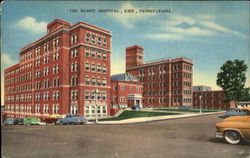
Hamot Hospital: Erie, PA 1950s |
|
Mid-December, 1954 On a Foster frame with 22 lbs. of traction for 11 |
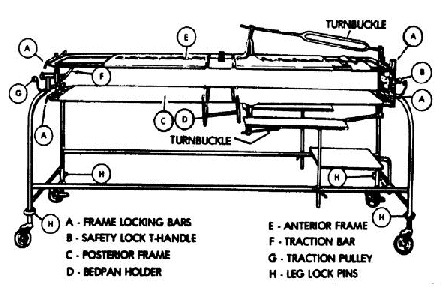
Here is the monster. Similar to Stryker frames. |
Homecoming April, 1955 Weight = 97 lbs. Down from 179 I was severely depressed and my parents were told to expect my death within a year. |

The Kessler Rehabilitation Institute as in appeared when I was there. The right side is the original facility, and the left side was a new addition made in the early 1950s. The old building had 2 20-bed dorms for men, and a 2-bed room for women, who were given low priority for rehab until the 1970s. The kitchen-cafeteria were also located in this section. The new wing, which extends beyond the left side of the photo contained large P.T. and O.T. departments, a medical library and offices. The facility is located near West Orange, NJ. |
By October of 1955, because of the care provided by my mother, my physical condition was much improved. Following an appeal from the high school nurse, the PA Voc Rehab agency agreed to sponsor me for rehab at Kessler. I was the first quad to be supported. | 
Henry Kessler, M.D., who founded the facility and was serving as the attending physician for all the rehabilitants during my stay.. |
|
Homecoming from Kessler. Check the weight gain. We |
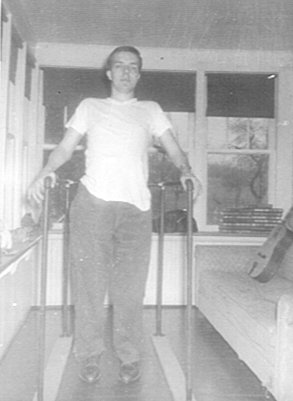
Walking in parallel bars with KAFOs, |
Summer, 1956, killing time. I devised a finger |
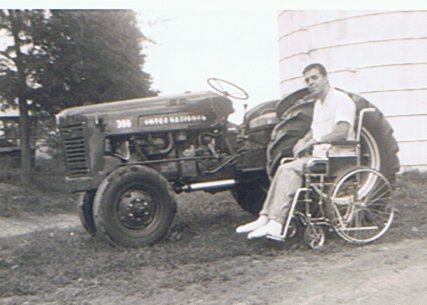
No doubt about what I would rather be ridding |

The massive complex that included the Woodrow Wilson Rehabilitation Center as it looked in Sept., 1956, where I began training to become a draftsman. There were about 300 disabled residents there from all over the U.S. All the buildings were connected with covered walkways. There were about 8 miles of hallways. No African-Americans were provided services because of segregation in the South. This complex has been replaced by a modern rehab center, which is in Fishersville, VA. |

Getting ready for a mental health break at the Parris Island of rehab facilities. Alcoholic beverages were forbidden at the state-run facility. lol |
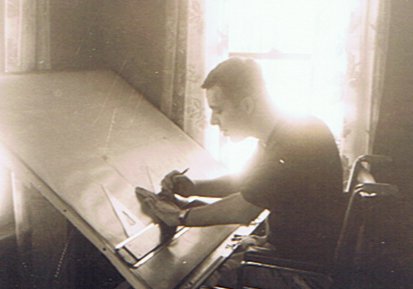
In June 1958, I had completed my training in drafting only to return to an area where there were no jobs for a draftsman. Thanks to an uncle in the residential construction business, I got a few jobs designing custom homes. (I designed them all to be accessible without being asked to.) No CAD in those days. |
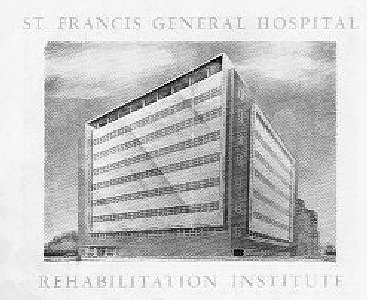
This facility no longer exists. It went bankrupt a few years ago and was purchased by the University of Pittsburgh Medical Center. It has been torn down and is being replaced with a state-of-the-art children's hospital. |
Frustrated that my voc rehab had not worked out, in the summer of 1960, the PA Voc Rehab agency said the least they could do was to send me for a medical checkup since I did not have one after leaving WWRC. It was suggested that I go for a 3-day checkup at a new rehab facility that had just opened in Pittsburgh. It would benefit the agency because I could give them some feedback about the services. I took the offer, mostly to give my parents a respite. As it turned out, I was the 13th patient admitted to the facility. Ominous? No way. The staff and I bonded immediately and my 3 day stay turned into 30 days. Caught up in the emerging social awakening that occurred in the 1960's, the staff decided I should get the chance to go to college, which was my pre-injury plan. Back when I was a senior, I had a ROTC scholarship in hand, pending passing a physical. We developed a plan for me to integrate Pitt. To be honest, my only motivation initially was that it would be something interesting to try. | 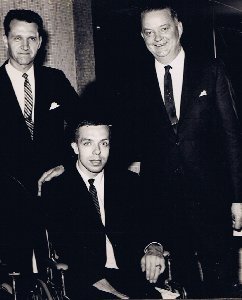
Right, Howard Rusk, MD, Father of Rehab Medicine, left, Tom Hohmann, MD, a protege of Rusk and Medical Director of the Rehab Institute. Eventually, Tom and I became colleagues. If I look a bit peaked, it is because I just got up after being packed in ice to cool my 105 temp. I spent 6 hours working with Rusk earlier in the day under blazing hot movie and TV lights making educational films and TV spots.
|
| Here I am at Pitt during the Fall,1961 semester. I was the first and only wheelchair using student then. It had been made clear to me by agency and university officials that I was a test case. My success or failure would determine if others would follow. I would not wish that kind of pressure on my worst enemy. Here I was, a former farm kid, with 11 years of education and more than 6 years away from studies. I never finished high school because following my injury, I was considered too disabled to benefit from even homebound instruction. It was not until after I had been sent a letter of acceptance by the University that they discovered I never graduated. They were so consumed with disability issues that they did not thoroughly examine my record. To avoid embarrassment, they allowed me to hurriedly pass a couple sections of the GED exam and deemed me qualified.
The first semester was a horrendous struggle. There were few wheelchair accessible buildings and I had to be carried up steps by other students. But I survived and the next semester, I was joined by a quad roommate. By my senior year, accessible dormitories had been built as well as other accommodations. Also, there were 5 other SCIs, as well as a few other wheelchair using students with other disabilities. The semester was also memorable because I met a young woman who would later help me reclaim my sexuality and get the other half of my life back. As a result of her, I started dating and met the woman who became my wife. Our relationship undid years of depression and hopelessness. I felt like a human being again. |
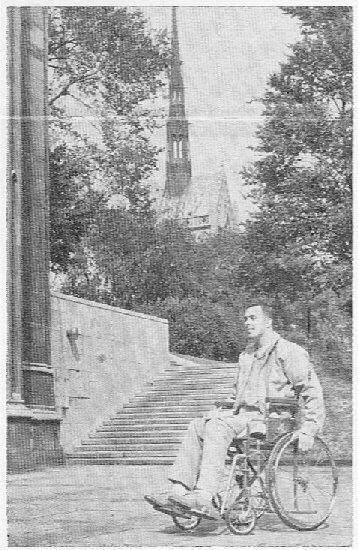
This photo depicts the loneliness I felt during my first semester at Pitt.
|

Summer, 1975 taking a break from work.
My wife since 11/26/1965
My post-retirement avocation

The covers from some of my work
|
Winner: Carolinas' Contemporary Playwrights' Festival 2003 |
 |
 |

Darwin's Folly |
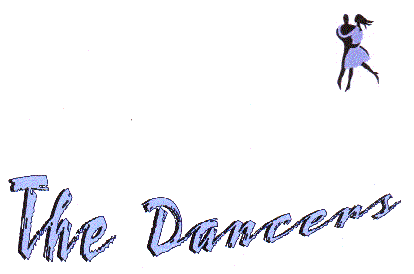 |
The End